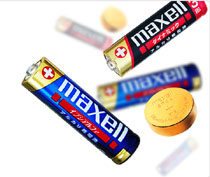电池是怎样发电的?
[ 2006-12-20 11:46 ]
电池可以说是我们生活中司空见惯的东西。可是您知道电池是怎么“发电”的么?如果您还记得小学里学过的“电流”这一课,那就来复习一下英文版的电池原理吧!
 A battery, by definition, consists of a group of
two or more primary or secondary battery cells, which convert chemical energy
into electrical energy. A portion of the chemical energy a cell produces is
transformed into heat, and a portion into an electric current. A battery, by definition, consists of a group of
two or more primary or secondary battery cells, which convert chemical energy
into electrical energy. A portion of the chemical energy a cell produces is
transformed into heat, and a portion into an electric current.
Primary battery cells can only be renewed during down time, when they
replenish their chemicals. When one reach for his or her emergency flashlight,
which contains a type of primary cell named an ordinary cell, and it fails to
light up, one falls victim of this very principle.
Each and every primary cell uses various chemicals, and contains
electrodes and an electrolyte, a liquid. Electrodes, a.k.a. "cell
elements," consist of either two different metals, or one metal and carbon.
Element number one, the cathode, is
primarily zinc. Element number two, the anode, is primarily carbon.
A chemical action sets the electrons free, when it triggers the cathode
slowly to dissolve into the liquid electrolyte. A circuit provides the escape
route for the newly paroled electrons, and they rush down the hatch in the form
of an electric current. Unfortunately, their freedom is short-lived, because,
once an electrical conductor is connected to the two elements; the current
flowing through it is recaptured as electricity.
Secondary battery cells merit less discussion, as they automatically
recharge, when an electric current is injected through them. Primary examples of
a secondary battery cells are the storage cells used to start, or not to start,
our car batteries. Because a storage battery does not actually store
electricity, it instills in one a false sense of security. One is well advised
to carry jumper cables in our cars, for those times when, much to ones
chagrin, the battery fails to start.
The misnomered "storage battery," draws its power from chemical charges.
Inside a storage battery, one finds a set of plates made of metallic lead, and a
set made of lead peroxide. When both sets of plates are immersed in sulphuric acid, they undergo a
chemical change, which transforms them into lead sulphate, which in turn produces the electrical
current in the storage battery, which does not store.
electrodes: 电极
electrolyte: 电解液
cathode: 负极
anode: 正极
chagrin: 懊恼
immerse: 沉浸,使陷入
sulphate: 硫酸盐
(英语点津 Annabel 编辑)
|